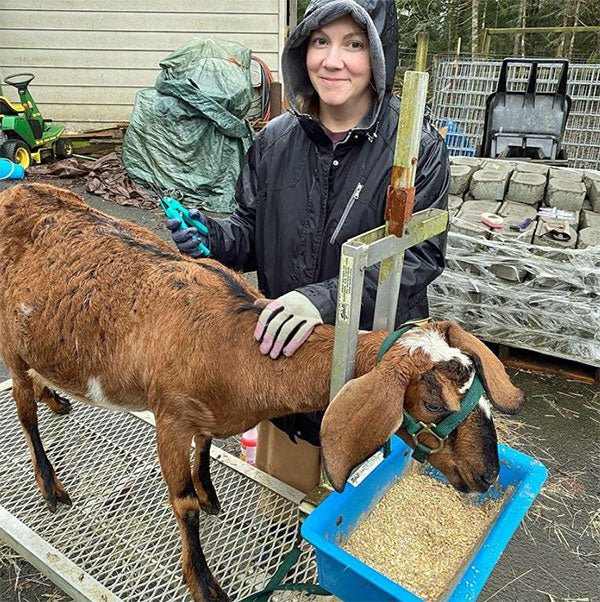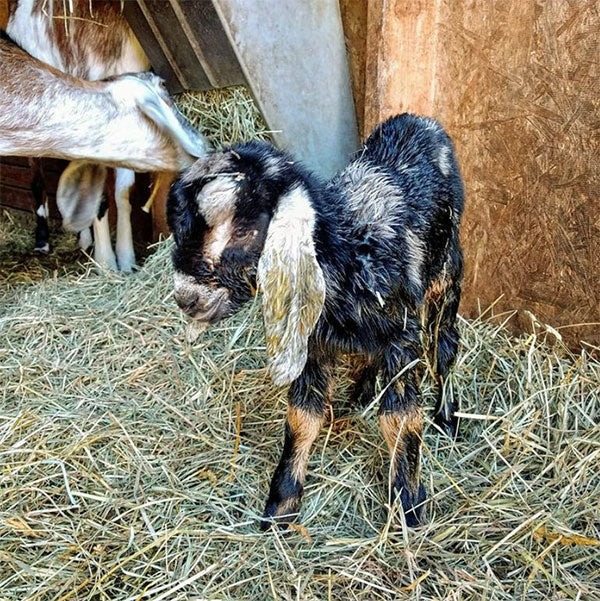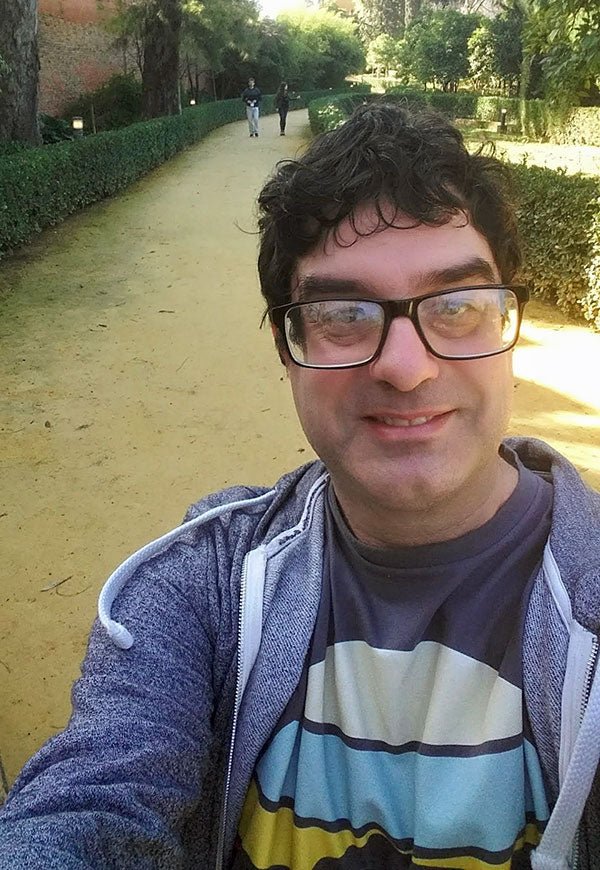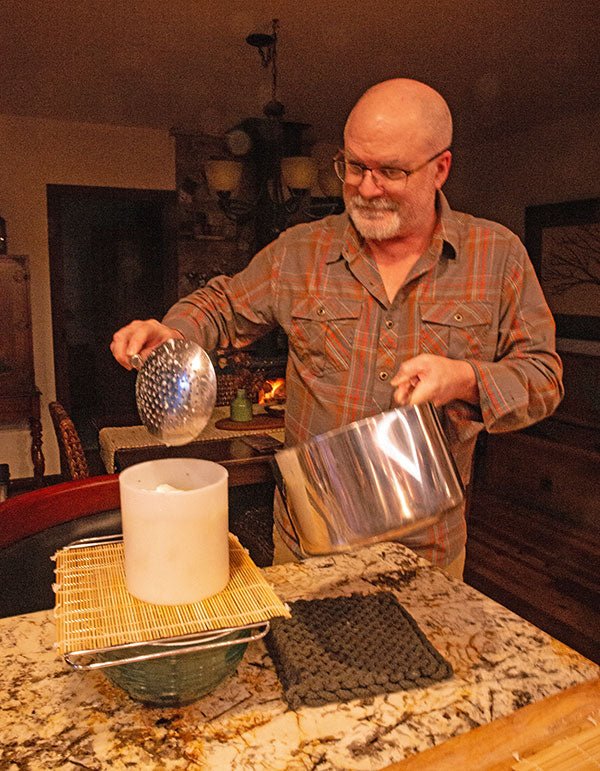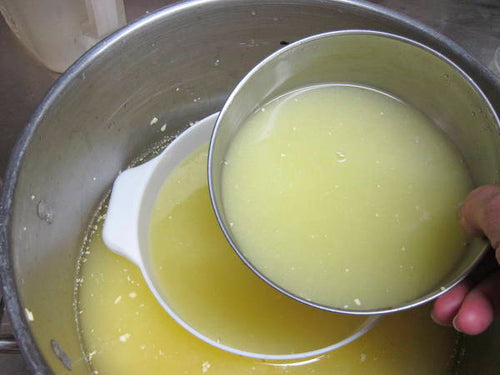How we came to interview Michelle …
The Cheese Queen is known in kingdoms near and far. (The Queen is also known as Ricki Carroll, the founder of our business, New England Cheesemaking Supply Co.).
Ricki’s brother, Peter lives in Oregon and he has been volunteering at a vaccination clinic there. Michelle Becker works at the same clinic. They chat while they work and recently, the conversation went from raising goats to making cheese. It turned out that Michelle is a big fan of New England Cheesemaking Supply Co. and she has Ricki’s book (Home Cheese Making).
Michelle was thrilled to be talking to The Cheese Queen’s brother, but she was even more excited when Peter actually called his sister and put her on the line. After a long discussion with Ricki about the joys of making cheese, Michelle agreed to be interviewed.

Michelle’s Instagram post about talking to Ricki. (Note: The picture above is the 3rd edition and now there is a 4th edition. Don’t worry – We sent her a new one.)
Michelle’s Story
I’m a mother of 3 girls (ages 6, 2, and 5 months), wife, pharmacist, gardener, dairy goat lover, lifelong learner, and a novice cheese maker. I work part time as a pharmacist right now. I was full time until September, 2020.
I was raised on the Little House on the Prairie books, and also on the stories my grandparents and great grandparents told about growing up in the woods of the Pacific Northwest.

Little sis and I with a neighbor and the neighbor’s horse circa mid 90’s. I’m in the tan shorts, little sister is in the red shirt, and the neighbor is wearing the blue shirt.
I heard stories about my pioneer great great great great (4 greats) grandfather, James Longmire crossing the continent with his family and being in the first wagon train to cross the Cascade Mountains into Western Washington.
I moved to the Oregon Coast for work after graduating from Oregon State University’s College of Pharmacy.
My husband and I loved this area and bought a property that came with its own dairy goat herd in July, 2010.

There were 4 nanny goats on the property when we bought it. They were semi-feral – very scared of people and didn’t like to be handled. They were being used to clear blackberry bushes.
We had to learn how to take care of them as we had never owned large livestock before. We consulted books, locals, the feed store, veterinarians.
We supplemented their feed and spent time hanging out with the herd while leading them to areas we wanted eaten down.
We learned how to trim their hooves from a local kid who helped us as a farmhand for a while.
We learned we had to put a closure on the front of the loafing shed at night when one of our goats was killed by a cougar. It was a steep learning curve.
We had to learn how to check out fences and keep them secure because they liked to work as a team to try to push the fences over and escape.
In 2011, Mike returned from his deployment in Iraq and we took a trip to Europe.
Mike had seen a lot of goat herders in Iraq and had observed how they used their animals for food. Then we saw and tasted Swiss Alpine cheese and saw how the Swiss traditionally raised their goats and cows in a small Alpine town called Gimmelwald.
These experiences congealed into the idea of us milking our goats back home. So, fall, 2011 we found a local lady who had a breeding Nubian buck and we bred our goats. We had kids by spring, 2012 and milk we could take by summer, 2012. (We waited a couple months before we started milking because we wanted the kids to have all the milk for the first couple months of their lives.)
Spring and summer, 2012 were busy because we’d never kidded before and we’d never milked an animal either. Steep learning curves there. 😂
Eventually we met local goat people and we learned from these “old timers.”
I don’t remember when I first heard about Ricki. It may have been during a summer goat milk surge while I was looking for cheese making supplies and came across her supplies for sale in the Caprine catalog. Later, I was looking for a book about cheese making and saw her book in the Mother Earth News Magazine.
At this point, I have only made soft cheeses like feta, chèvre, etc. as I’m usually pressed for time.
Chèvre was the first recipe I tried. It was magnificent if I do say so myself. We shared with friends, family, and coworkers. I’ve since made a lot of chèvre, fromage blanc, ricotta, various yogurts, feta, and even attempted some mozzarella.

Chèvre from molds. I do not use weights. The weight of the curds is enough to drain this soft cheese and make these forms.
We eat these cheeses straight or use them in lasagna, on salads, on cheese and cracker plates, on fruit, mixed with herbs, and in soups. Someday, when my kids are older and I have more time to myself, I will try the hard cheeses.
I became an Oregon State University Master Food Preserver in 2014. Part of passing the course was presenting a 15 minute food preservation demonstration. I took a gallon of our goat milk and made ricotta with it in under 15 minutes. And I passed the course.
Since then, I’ve taught others how to make some of these simple cheeses both through the extension and at my home using Ricki’s book and recipes. I love sharing this information because access to healthy food helps keep people off of medications and out of the pharmacy. (I’m happy to have patients but I’d rather only see you there on rare occasions.)
We are lucky we landed in a place with a mild climate, great for dairy production. I’ve learned there was a local dairy in town until the 1950s. Now most people get their cheese from Tillamook an hour and a half to the north. But I find a lot of satisfaction in knowing I can make this food staple easily myself.
Other benefits of cheese making: it’s delicious, it gives you something to share with friends (and brag about), it’s fun to do, it’s something you can do with your kids, it gives you a sense of accomplishment, it’s a great conversation piece, and it connects you with an activity humans have been doing for thousands of years.
I can’t thank Ricki enough for her supplies and her instruction. They’ve allowed me to develop a practical skill that connects me to my goats, this land, my family, the local community, my ancestors, and a worldwide cheese making community.






























